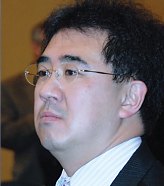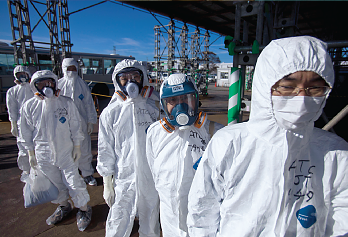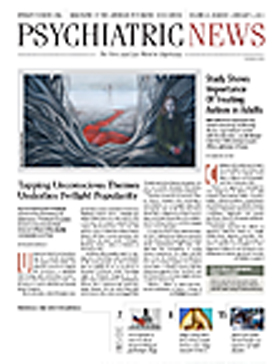The Great Eastern Japan Earthquake on March 11, 2011, along with the ensuing tsunami and the subsequent explosions at three nuclear power reactors at Fukushima, left much physical and human damage in their wake, reported Japanese psychiatrists at the annual meeting of the International Society for Traumatic Stress Studies in Baltimore last November.
More than 15,000 people died, nearly 6,000 were injured, and 3,700 remain missing.
The disaster workers who responded to the scene, and who continued working in the area for many months afterward, were among the hardest-hit groups, said Jun Shigemura, M.D., Ph.D., of the National Defense Medical College in Tokorozawa, Japan.
“Disaster workers were not only exposed to traumatic events but had heavy workloads and bore high expectations from the rest of Japanese society,” said Shigemura, listing a number of affected groups: police, military forces, firefighters, coast-guard personnel, nuclear-plant employees, civilian government officials, construction workers, and-medical and dental professionals.
Many recovered bodies were held pending identification in temporary morgues. Shigemura described meetings with mortuary workers responsible for 500 unidentified bodies in a single warehouse. He sought to destigmatize the workers’ acute responses to the tragedy and to handling the resulting bodies, and he helped supervisors understand the stresses borne by these workers.
Nuclear-plant workers were under particular stress, he said. They worked six days on and three days off and often slept in the plants wearing their protective clothing. Many had already come close to death, having survived the tsunami, the explosion, and the release of radiation. Some had lost coworkers, family members, and homes and were additionally burdened by public criticism and guilt for being among the perpetrators of the nuclear part of the disaster.
Radiation Complicated Response
National health authorities will need to allocate additional resources to counteract this increased stress and higher prevalence of mental health disorders among the disaster responders, said Shigemura.
The radiological dimension of the disaster added to the complexity of the response, said Yoshiharu Kim, M.D., Ph.D., of the National Center for Neurology and Psychiatry in Tokyo.
“Anxiety about radiation can develop independently of actual pollution,” he said. “So the scientific idea of ‘safety’ is different from the psychological sense of ‘security.’ ”
As a result, it is important for health authorities to integrate psychosocial support with provision of information about radiation well beyond the known geographic limits of increased radioactivity, he pointed out.
Lessons Learned From Prior Disaster
As bad as the disaster was, the mental health response might have been worse had it not been for the lessons learned from a previous massive earthquake that struck the city of Kobe in January 1995, said Hiroshi Kato, M.D., Ph.D., of the Hyogo Institute for Traumatic Stress in Kobe.
“Before the Kobe quake, the suffering of survivors was overlooked because people were habituated to disasters and bore them with silence, avoidance, and patience,” said Kato. “ ‘Gaman’—endurance—is a very important attitude in Japan.”
The nation was better prepared to offer mental health support for survivors after the March earthquake, but was handicapped by the sheer scope of the damage, said Kato. “Many survivors lost family members, and people couldn’t put their lives back together because the loss of infrastructure destroyed their livelihoods as well.”
The mental health response system developed after Kobe depended on public-health nurses providing outreach, since they were already close to local people and thus were able to reduce the stigma some people felt about seeing higher-level mental health professionals.
After the 2011 disaster, however, regional health centers were evacuated or severely damaged, said Kato. In addition, many health workers were among the disaster’s victims. Thus, increasing the mental health workforce on such short notice was difficult. Long-term funding was allocated for more mental health workers, but there were not enough professionals available for the short term.



